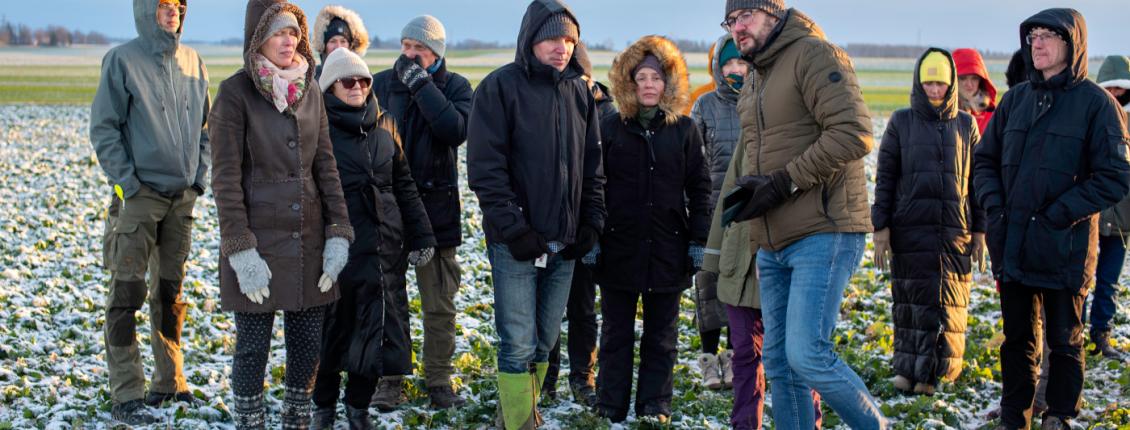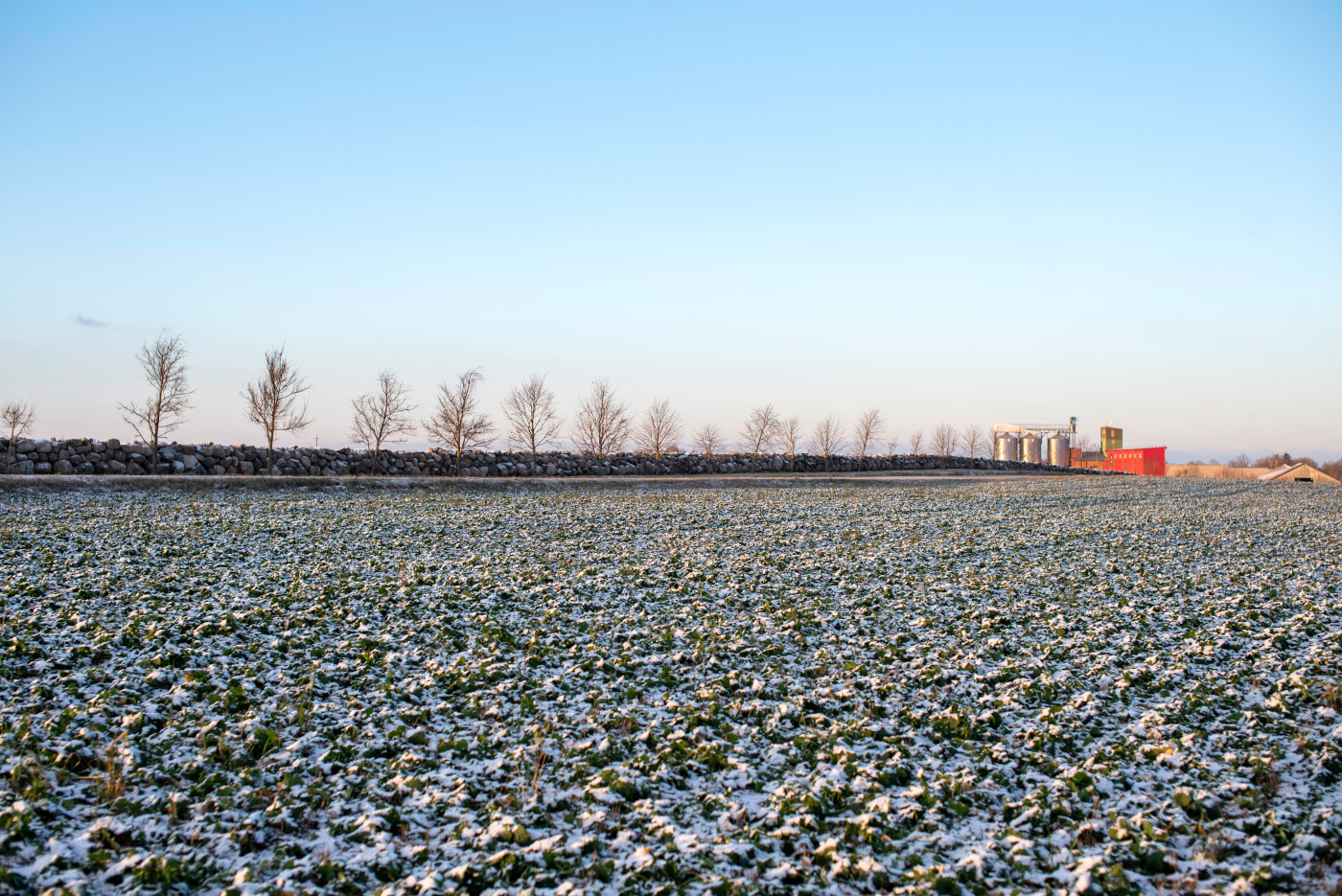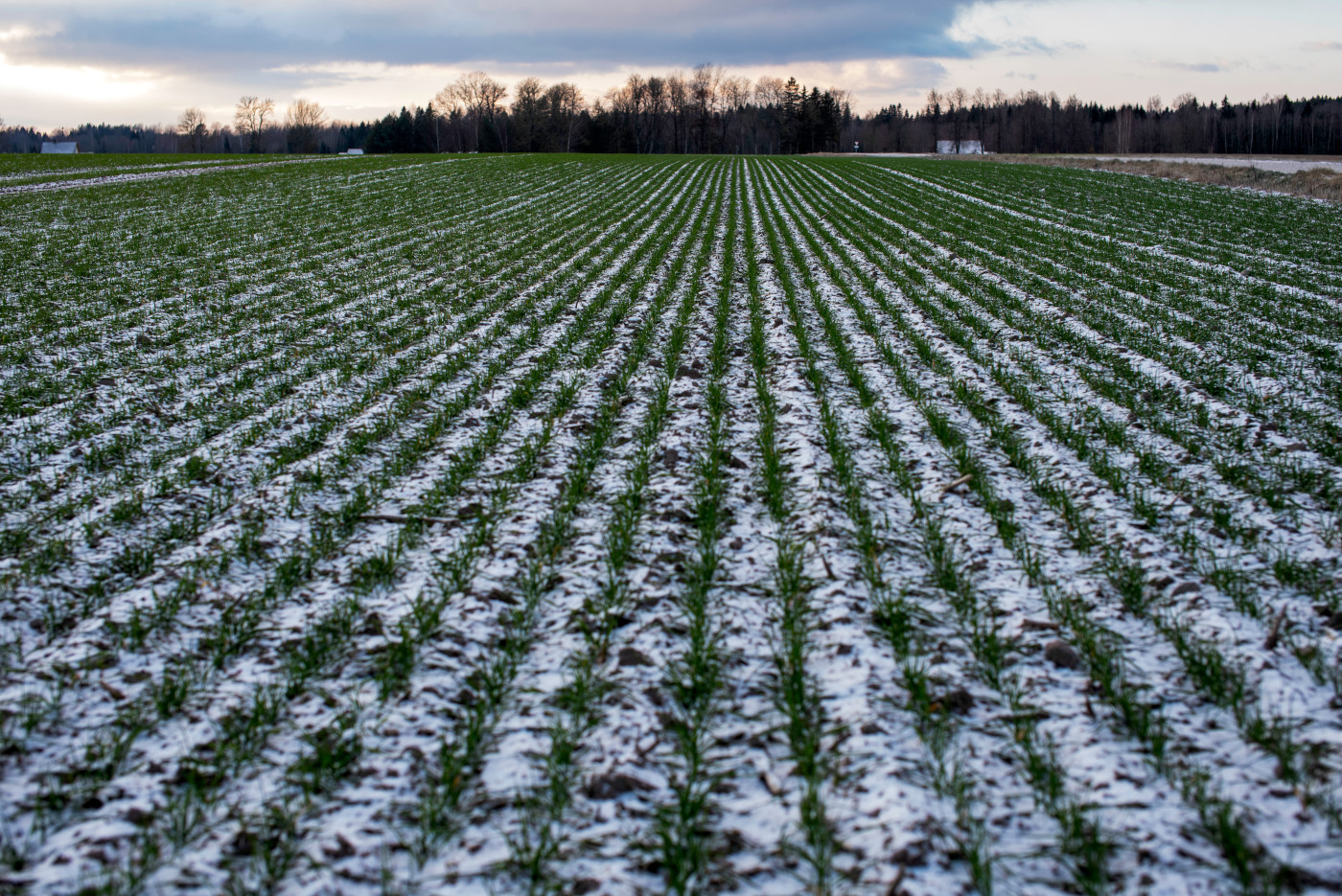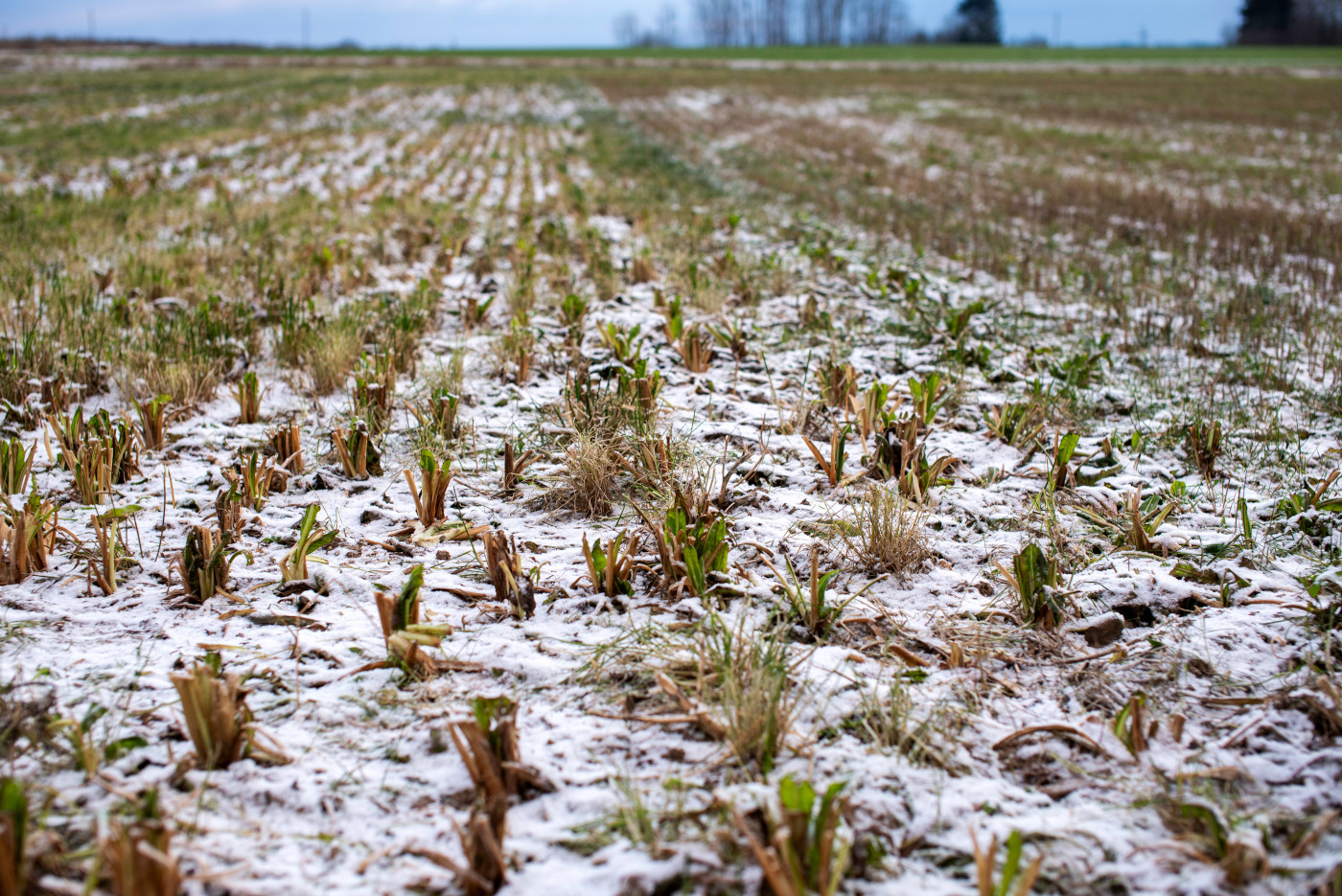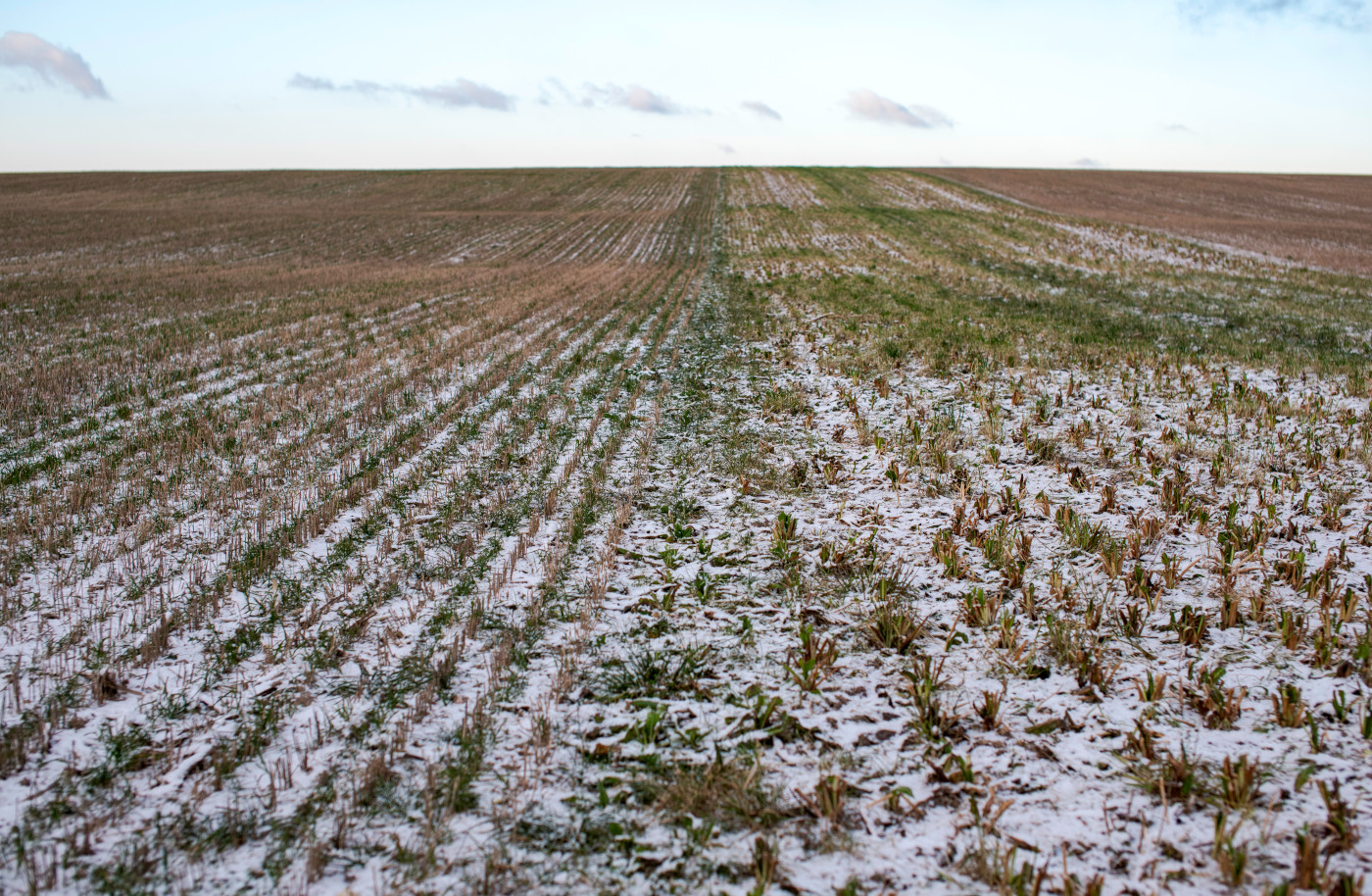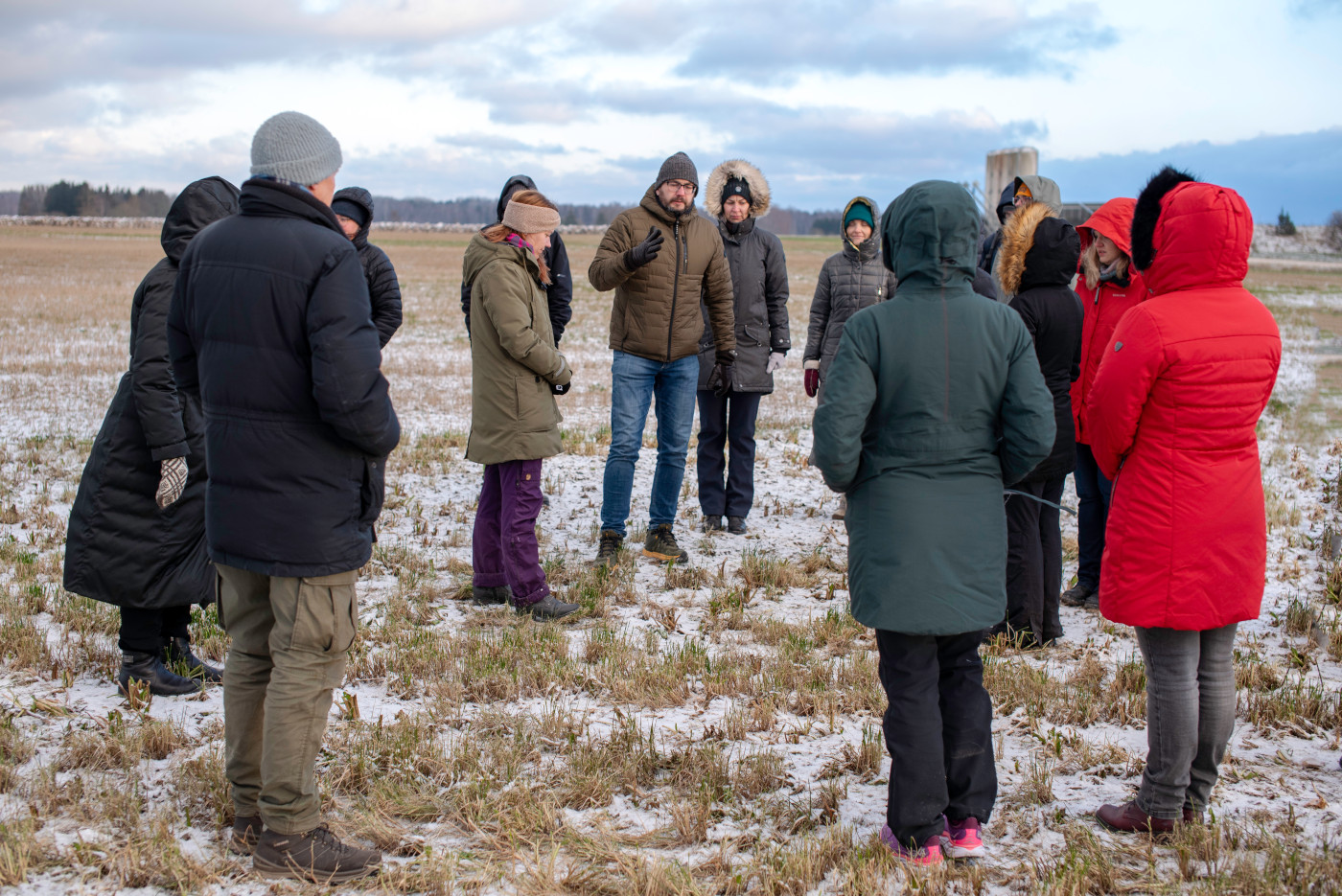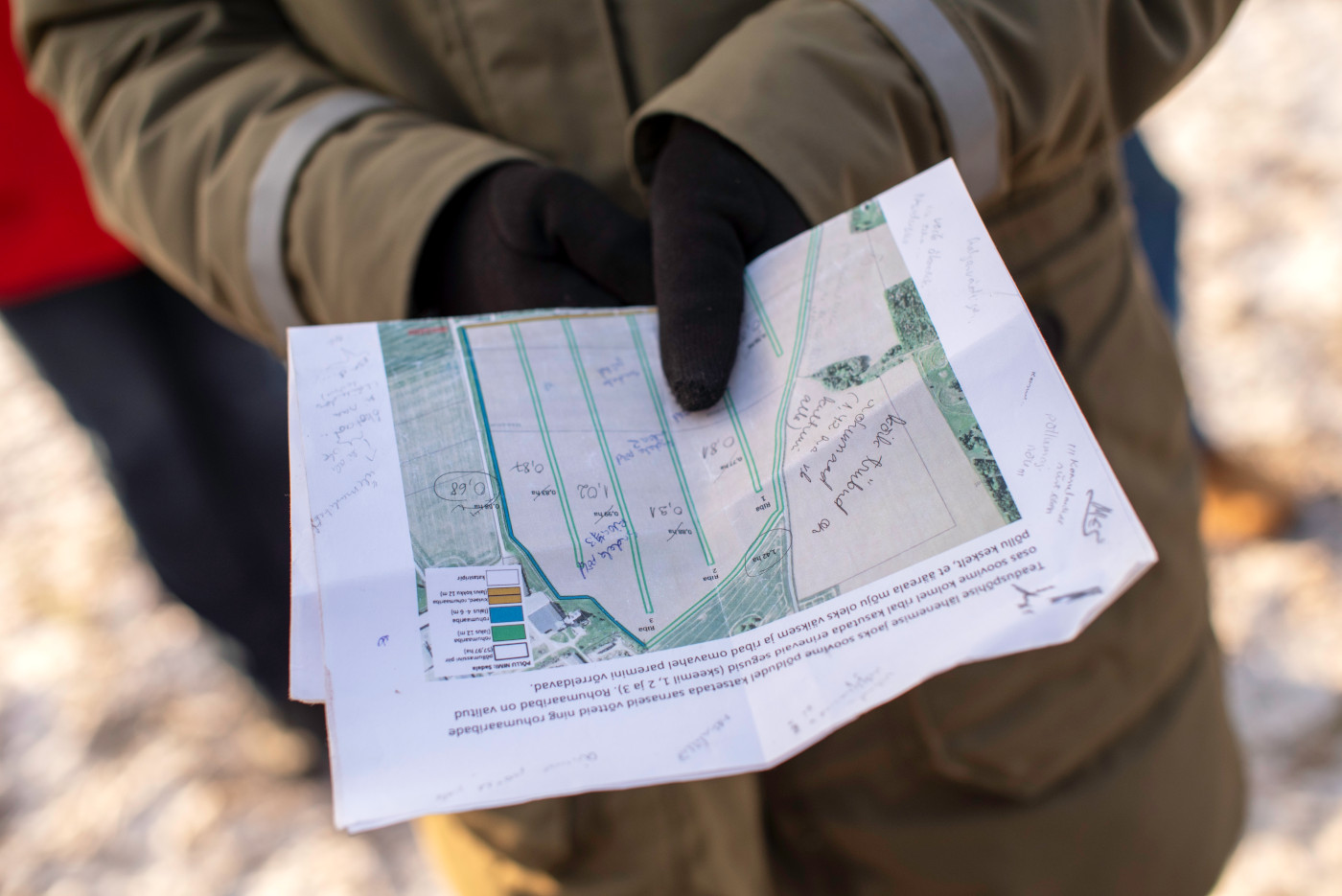December 1, 2023
Kaidi Tingas
Farmers and scientists are working together for field yields and biodiversity
Finally, a cooperation between University of Tartu researchers and farmers interested in sustainable farming practices has been launched, testing different practices combining food production and nature conservation, with the aim of increasing soil fertility, enhancing pollination, increasing field biodiversity and promoting natural pest control.
Together with our partners from the "LIFE IP ForEst&FarmLand" project, we went to Sadala to see the first experiments in conservation agriculture.
One of our partners, the large-scale producer Sadala Agro, has created 12-metre-wide grass strips on 58 hectares of field, which aim to increase landscape diversity, provide habitat, shelter and feeding ground for a variety of arthropods, including pollinators and natural enemies of pests, as well as for birds and small mammals. In addition, well-maintained grassland strips reduce the amount of weeds and pests that reach the field and thus the need for pesticides. According to Kristiina Jürisoo, the coordinator of our project's conservation agriculture activities, three different strip treatments are planned to be tested in the Sadala fields, with a species-rich mixture and a species-poor mixture sown so far. "We won't know if grass strips work in intensive farming until we have tested them," notes Ahti Kalde, CEO of Sadala Agro.
This spring, another partner of ours, Järvamaa Vocational Training Centre, established grass strips on a 24-ha field. It was the first time they had undertaken such an activity and they are eagerly awaiting the monitoring data from the university.
Indeed, grassland strips are most useful in landscapes with little diversity (such as large, monotonous fields with few landscape elements). You can find out how to create grass strips on the website heapõld.ee. There is also a wealth of information on other conservation farming practices.
Organic farmer Raimond Pihlap is also helping to increase biodiversity in the agricultural landscape by starting to create field islands that provide habitats for many plants, birds, mammals, fungi, pollinators, spiders, and beetles. Airi Külvet, Estonia's best beef cattle breeder of 2022 and this year's Farmer of the Year, is also working with us, experimenting with the establishment of cultivated grassland with a species-rich seed mix. In addition, Airi maintains semi-natural grasslands with the help of her beef cattle, using a method of grazing that is not very common in Estonian meadows - portion grazing.
The biodiversity of agricultural landscapes is drastically declining and if you are a farmer interested in conservation farming practices, and would like to restore the diversity of arable land and monitor the results together with researchers from the University of Tartu, please contact us!
